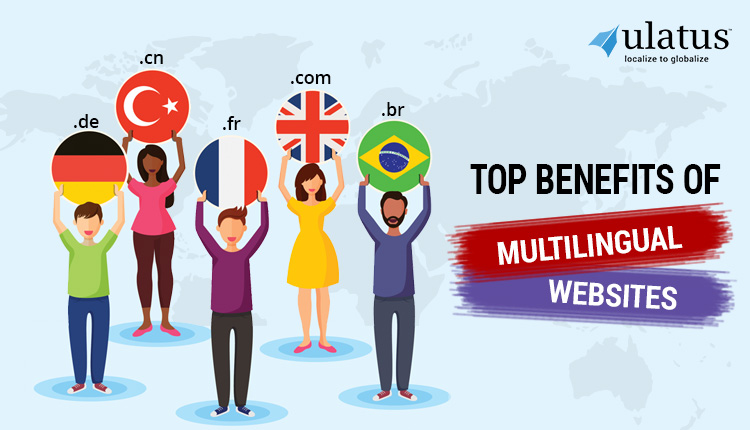If you have been thinking about a way to attract new customers worldwide, then developing multilingual websites should be at the top of your expansion plan. With 72% of consumers across the globe preferring websites in their language, creating multilingual websites is a surefire way to meet your goals. Regardless of whether consumers speak some English, their trust in a company is naturally greater when information is available in their native language.
Advantages of Multilingual Websites
There are numerous advantages to creating multilingual websites, including:
- You will reach a wider audience. The top 10 countries for internet usage are China, India, the United States, Indonesia, Brazil, Nigeria, Japan, Russia, Bangladesh, and Mexico. Think about how many more potential customers you can draw by focusing on just a few of these markets. Considering that 54% of consumers are more interested in information in their own language rather than price, you will easily garner new clients when you tailor your website to their languages.
- Your sales will soar. Once you reach new audiences, you can look forward to a boost in sales. If your product or service is successful in your own market, imagine how well it would do overseas. About 92 billion people worldwide made purchases online in 2019, and e-retail sales exceeded $3.5 trillion; your business could get its share of worldwide online sales.
- Communication with customers will improve. Not only are customers more likely to purchase from your company if they can communicate with you, but the chances are higher that they will remain with you as well. They also will appreciate being able to access customer service in their language, so that is something to keep in mind when developing the sites.
- Your company will gain a competitive advantage. With countless websites available to users, many of them do not feature content in more than one language. A website in multiple languages will make your company stand out as one that cares about its customers in other regions. Additionally, consumers perceive that a business with a multilingual website is a global company, increasing your edge over competitors.
Multilingual Search Engine Optimization Will Skyrocket
One of the best aspects of translating and localizing websites is the excellent multilingual search engine optimization (SEO) you will achieve. By focusing on the needs of clients worldwide, your SEO will surge. Furthermore, since several search engines place great significance on local SEO, your ranking will increase both on a global and local level.
Some steps to achieving top-notch SEO include:
- Ensuring that the most effective keywords are selected for the target language.
- Making certain that your website loads quickly; customers are more likely to leave your site if it is getting bogged down.
- Translating metadata, it will help guarantee that your website ranks higher in your target region.
- Utilizing top-level domains that are coded for the country you are serving.
- Using hreflang tags, which help Google recognize the site’s language, along with the region for which it is intended.
Challenges in Creating a Website
While the benefits of multilingual websites are huge, it is important to recognize that there are challenges with them as well. Creating a multilingual website involves more than just swapping out words from one language to the next. For your website to be effective, content needs to be meaningful to the target audience through translation and localization.
Some of the biggest challenges include:
- Making certain that translations are completely error-free. This is absolutely critical; if translations are wrong, customers will lose trust and confidence in your company.
- Adapting the design to suit the language. Different languages have various space requirements. For example, while translating from English to Portuguese could decrease the text by 15%, translating from English to Japanese would increase the necessary space by 60%. In addition, varying amounts of vertical space are needed for certain languages, and others require the layout to support right-to-left text direction.
- Ensuring that cultural needs are carefully considered. Through colors, image choices, video content, and other features, localizing content to suit an area is necessary to ensure the success of your site.
- Guaranteeing that dates, times, and currency are accurate. These are important details that cannot be overlooked.
To overcome these challenges, partner with a language services provider that can ensure that your multilingual website is top-notch.
With 4.57 billion active internet users worldwide, creating multilingual websites should be an integral part of your company’s growth strategy.
Summary
If you are ready to expand your business and attract countless new customers, then creating multilingual websites is an excellent choice for you.






Share your thoughts